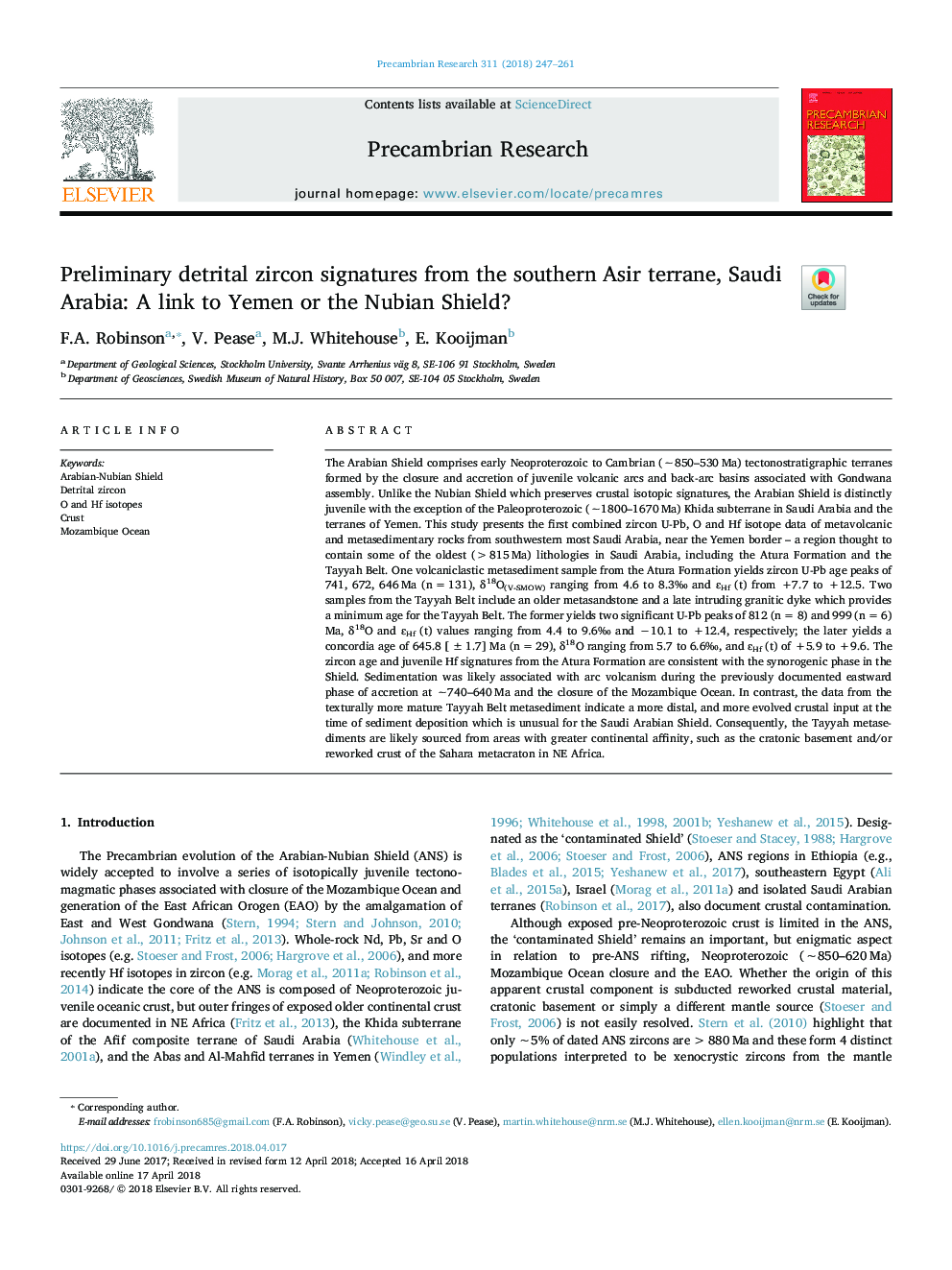| کد مقاله | کد نشریه | سال انتشار | مقاله انگلیسی | نسخه تمام متن |
|---|---|---|---|---|
| 8912557 | 1639564 | 2018 | 15 صفحه PDF | دانلود رایگان |
عنوان انگلیسی مقاله ISI
Preliminary detrital zircon signatures from the southern Asir terrane, Saudi Arabia: A link to Yemen or the Nubian Shield?
ترجمه فارسی عنوان
امضاهای زیرکون شمالی از جنوب آسیر تررین، عربستان سعودی: لینک به یمن یا سپر نوبیانی؟
دانلود مقاله + سفارش ترجمه
دانلود مقاله ISI انگلیسی
رایگان برای ایرانیان
کلمات کلیدی
موضوعات مرتبط
مهندسی و علوم پایه
علوم زمین و سیارات
ژئوشیمی و پترولوژی
چکیده انگلیسی
The Arabian Shield comprises early Neoproterozoic to Cambrian (â¼850-530â¯Ma) tectonostratigraphic terranes formed by the closure and accretion of juvenile volcanic arcs and back-arc basins associated with Gondwana assembly. Unlike the Nubian Shield which preserves crustal isotopic signatures, the Arabian Shield is distinctly juvenile with the exception of the Paleoproterozoic (â¼1800-1670â¯Ma) Khida subterrane in Saudi Arabia and the terranes of Yemen. This study presents the first combined zircon U-Pb, O and Hf isotope data of metavolcanic and metasedimentary rocks from southwestern most Saudi Arabia, near the Yemen border - a region thought to contain some of the oldest (>815â¯Ma) lithologies in Saudi Arabia, including the Atura Formation and the Tayyah Belt. One volcaniclastic metasediment sample from the Atura Formation yields zircon U-Pb age peaks of 741, 672, 646â¯Ma (nâ¯=â¯131), δ18O(V-SMOW) ranging from 4.6 to 8.3â° and ÉHf (t) from +7.7 to +12.5. Two samples from the Tayyah Belt include an older metasandstone and a late intruding granitic dyke which provides a minimum age for the Tayyah Belt. The former yields two significant U-Pb peaks of 812 (nâ¯=â¯8) and 999 (nâ¯=â¯6) Ma, δ18O and ÉHf (t) values ranging from 4.4 to 9.6â° and â10.1 to +12.4, respectively; the later yields a concordia age of 645.8 [±1.7] Ma (nâ¯=â¯29), δ18O ranging from 5.7 to 6.6â°, and ÉHf (t) of +5.9 to +9.6. The zircon age and juvenile Hf signatures from the Atura Formation are consistent with the synorogenic phase in the Shield. Sedimentation was likely associated with arc volcanism during the previously documented eastward phase of accretion at â¼740-640â¯Ma and the closure of the Mozambique Ocean. In contrast, the data from the texturally more mature Tayyah Belt metasediment indicate a more distal, and more evolved crustal input at the time of sediment deposition which is unusual for the Saudi Arabian Shield. Consequently, the Tayyah metasediments are likely sourced from areas with greater continental affinity, such as the cratonic basement and/or reworked crust of the Sahara metacraton in NE Africa.
ناشر
Database: Elsevier - ScienceDirect (ساینس دایرکت)
Journal: Precambrian Research - Volume 311, July 2018, Pages 247-261
Journal: Precambrian Research - Volume 311, July 2018, Pages 247-261
نویسندگان
F.A. Robinson, V. Pease, M.J. Whitehouse, E. Kooijman,
